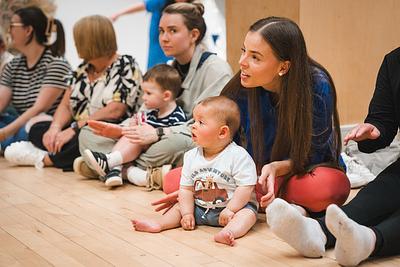Looking for all Articles by Early Years team?
The benefits of sharing nursery rhymes
Sharing rhymes can be a lovely alternative to singing, while still being beneficial to babies' development.

What makes a rhyme?
Rhymes have lots of the same benefits as songs, but while songs have a melody and are sung, rhymes are usually spoken or chanted. Both have regular patterns of sounds and repeating structures, but rhymes tend to be shorter than songs and have lots of repetition which makes for easy learning.
Children’s rhymes generally have sounds which 'match' in the final syllables or final words and at the end of a line. For example:
Round and round the garden like a teddy bear
One step two step, tickly under there!
Why share rhymes with babies and young children?
Rhymes Are FUN!
Rhymes often involve tickling and laughing. Physical contact between you and your child can give you both a boost of oxytocin – the hormone which is thought to help us feel connected to one another.
Go bananas in Bananas Unite(this link will open in a new window) or build up to the tickle in Round and Round the Garden(this link will open in a new window) to get the oxytocin flowing!
Their repeating patterns and predictable rhythms make rhymes easy and enjoyable for children to join in with. It makes them easier to remember too. If you feel a bit unsure about singing together, rhymes can be a great way to start letting go of some of that fear and have some fun.
Rhymes help brain development
Even while having fun, children’s brains are working hard. When you share a rhyme with a child they are learning lots of the building blocks for communication:
- Making eye contact when you rhyme together helps children learn when it’s their turn, creating opportunities for them to learn conversation skills.
- Repeating patterns help children to listen and pay attention, and of course, understand language too.
- Rhyming helps children start to work out how sounds are put together to create words, which helps with speech development and with reading as a child gets older.
- Rhythm can help children hear the syllable structure of words as well as separating words in sentences. This is called ‘phonological awareness’ and is an important part of learning to read.
- Lots of the best rhymes have actions too. These are useful for us all when trying to remember the words, but also help children learn what new vocabulary means and encourages the development of their motor skills and coordination.
Think about how many of these benefits are included in a simple rhyme like, One Potato, Two Potato, Three Potato Four(this link will open in a new window). It’s impressive how even the simplest of counting rhymes can have so much going on behind the scenes!
Rhymes are interactive
Little ones can’t stop themselves joining in with the rhyming words in rhymes and stories. When you say a rhyme, you naturally slow down and leave a gap which allows them to jump in with the rhyme:
Two fat sausages sizzling in a pan, one went POP and the other went…
...BANG!
Unleash your creativity and adapt or make up a simple rhymes, it’s a sure-fire way to keep your wee one’s attention.
How about:
Two little butterflies sitting by the shed
One called Mia and one called Fred?
You can even help wee ones learn new ideas by including them in a rhyme. Children are guaranteed to join in with 'LOUD' in this simple rhyme:
Two little dickybirds sitting on a cloud
One called quiet (shhh!) and one called... LOUD!
Find more rhymes and songs on our Bookbug app(this link will open in a new window) and in our Song and Rhyme library(this link will open in a new window). If you run Bookbug Sessions you can find lots of ideas for including rhymes in our Session Plans(this link will open in a new window).
References
Shorey, S., Asurlekar, A. R., Chua, J. S., & Lim, L. H. K. (2023). Influence of oxytocin on parenting behaviors and parent–child bonding: a systematic review. Developmental Psychobiology, 65(2), e22359.